As Wages for Many Essential Workers Flatten, Lowe’s Issues Third Round of Hazard Pay
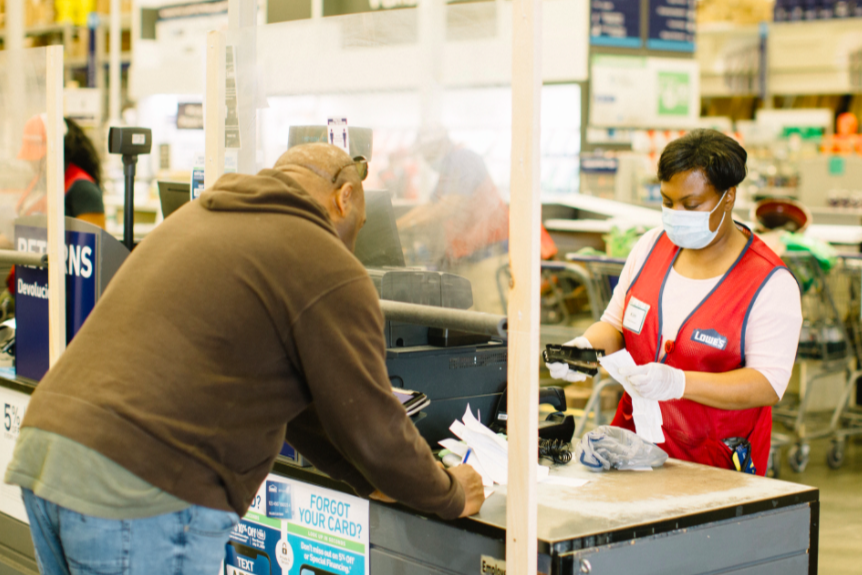
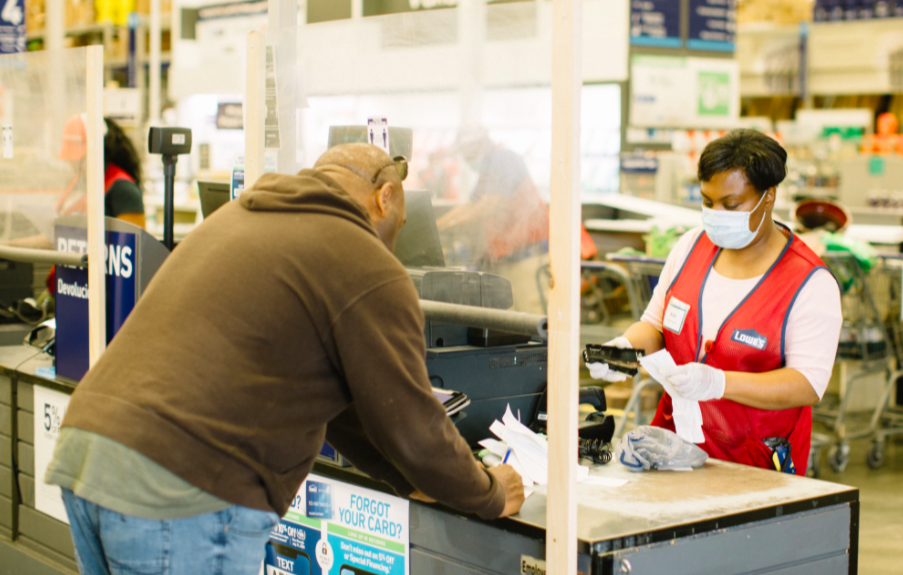
For the third time since March, Lowe's Companies, Inc. plans to issue hazard pay to its full-and part-time employees in contrast to other companies that have already ended their pandemic bonuses and temporary hourly increases for essential workers.
In mid-July, full-time hourly Lowe’s employees are slated to receive an additional $300, and part-time and seasonal associates will receive $150. Lowe’s says it is allocating a total of $100 million for the payments to acknowledge those who have been working during the novel coronavirus pandemic.
"This year has been full of challenges and uncertainty, and we are tremendously grateful for the hard work, dedication and commitment of our front-line associates," said Marvin Ellison, Lowe's CEO and president, in a prepared statement.
The most recent wave of bonuses brings Lowe’s total hazard pay allocation to $450 million since March. Payments of $300 and $150 were made to both full- and part-time employees in March and May. Besides the bonuses, the company raised the hourly rate for full-time, part-time and seasonal associates by $2 for the month of April. Profit-sharing bonuses to front-line associates totaling $87 million were announced in June. Telemedicine services are also offered to all Lowe’s employees and families, even those not enrolled in the company’s health insurance plans.
Additionally, in May Lowe's announced $25 million in funding to support community and employee needs, including an employee relief fund and personal protective equipment for medical professionals. Employees are also eligible for 14 days of emergency paid leave, and emergency paid leave has been expanded to as much as four weeks for those groups at high risk for COVID-19.
Lowe's actions stand out when compared to other large U.S. retailers. Some companies began eliminating bonuses and temporary hourly pay increases in May and June — just as the pandemic was starting to ramp up in many parts of the country. Starbucks had increased hourly wages by $3, but that boost lasted only until the end of May. Rite Aid, Kroger and Amazon also ended their bonuses and wage bumps. Target's hazard pay of an extra $2 per hour for workers in stores and distribution centers came to an end on July 4.
Retail and other essential workers are arguing that while the spread of the coronavirus may have slowed in some areas, they still remain at risk and can’t afford to take time off or leave their jobs. Many states are now requiring customers to wear masks when entering stores and businesses, but not everyone complies — and many essential workers have reported that they must bring their own personal protective equipment, such as masks and gloves, to work.
The United Food and Commercial Workers’ Union (UFCW) in Southern California is calling on grocery giant Kroger to continue bonus pay and continue enhancing safety practices. In May, the U.S. House of Representatives passed a $3 trillion coronavirus relief bill with funding for local and state governments and families, including $200 billion in hazard pay for essential workers. Republicans have said the bill is unlikely to pass in the Senate.
“As long as we are wearing gloves, as long as we are wearing masks and social distancing, it seems obvious to me that we are working in hazardous circumstances,” argued John T. Niccollai, president of UFCW Local 464A, in the Wall Street Journal. “It is manifestly unfair to eliminate the hazard pay at this point.”
Sign up for the weekly Brands Taking Stands newsletter, which arrives in your inbox every Wednesday.
Image credit: Lowe’s
Boston: A Snapshot of Racism in America’s Real Estate Sector
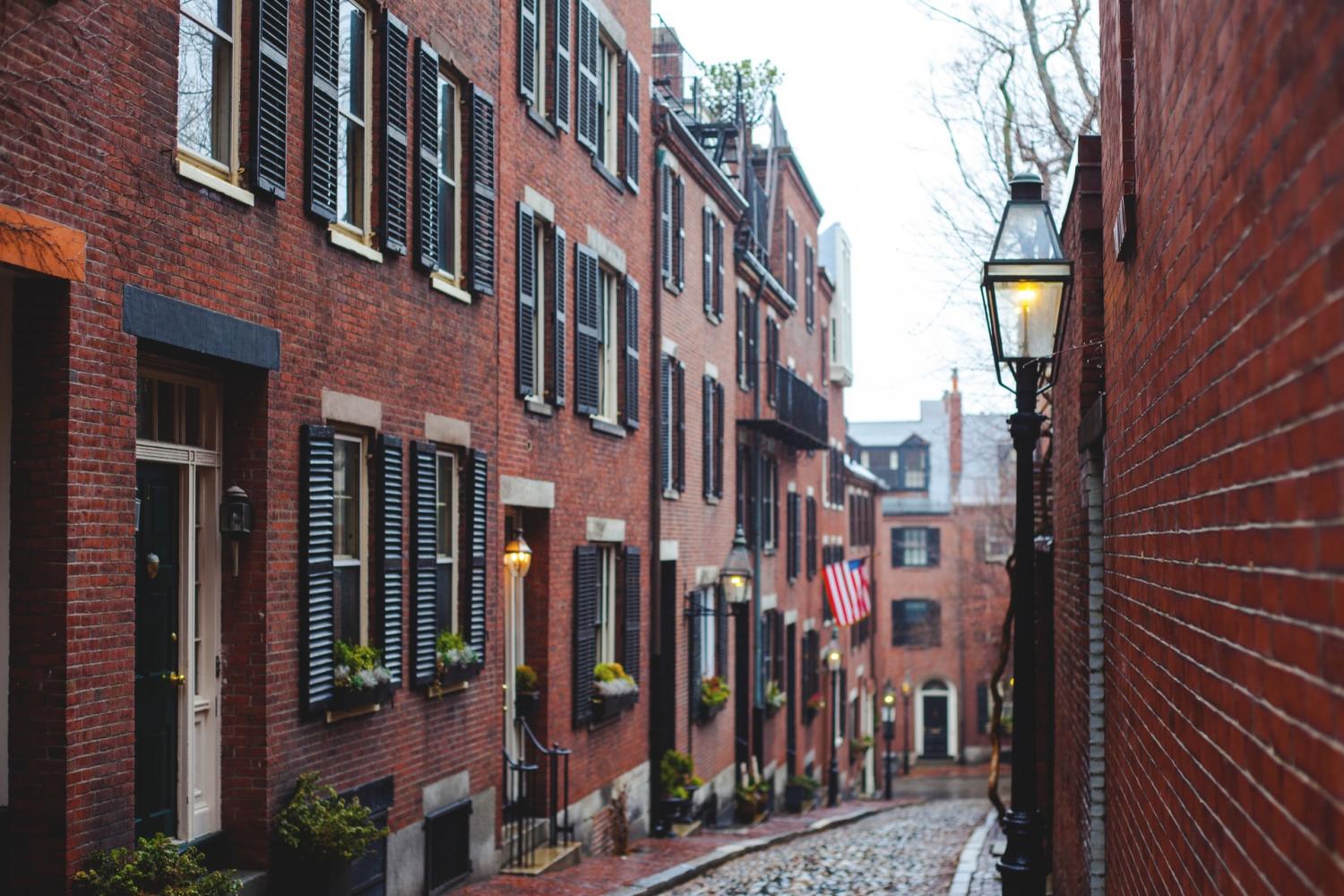

Real estate companies are among the businesses that have said they “stand” with Black Americans in the wake of the murders of George Floyd, Breonna Taylor, Rayshard Brooks and over a year after his death, Elijah McClain. The problem is that once again, words are not matching deeds – and a potential wave of evictions in Boston offers a snapshot showing how people of color are at most risk during this pandemic and concurrent economic crisis.
People of color are at high risk of eviction in Boston
A new study led by a team of researchers at the Massachusetts Institute of Technology shows that communities of color in Boston are at a much higher risk of eviction than neighborhoods that are predominately white.
The wide discrepancies in eviction rates is nothing new; the MIT study showed in the past decade, people of color in Boston were at far greater peril of being evicted compared to their white counterparts, whether their rent was subsidized or if they were paying the market rate for the roofs over their heads.
But as we’ve seen during this pandemic, the ravages of COVID-19 have exacerbated what people of color have long confronted when it comes to the risk of losing their homes. The study noted that between March 1, when it was clear Boston was becoming a hotspot of the novel coronavirus, to April 20, when Massachusetts Governor Charlie Baker signed legislation that enacted a moratorium on evictions, landlords embarked on an eviction notice spree.
The result: 78 percent of Boston’s eviction cases that were suspended due to the Massachusetts-wide moratorium were in communities of color. Furthermore, the number of eviction notices could have been higher than what the MIT research reviewed were able to cull from local court records – as in just about any U.S. town and city, many evictions in Boston do not undergo a formal legal process.
Evictions are one leading contributor leading families to become trapped within a cycle of poverty. Unstable employment, of course, can lead to a family falling behind on rent. An eviction than can lead to the piling of additional debt, including back payments for missed rent payments, the costs of storage units, moving costs and the security deposits that are often a condition to signing a new rental lease.
Hence Boston exhibits the racial wealth gap common across the U.S. The MIT pointed to a 2015 Federal Reserve Bank of Boston study, which found that the average net worth of a white family in Boston was close to $250,000. For Latino families, the average was $2,700.
That same year, the average net worth of a Black family in Boston was $8.
The real estate industry and systematic racism
But it’s not just the high cost of living in Boston and dubious real estate practices that have led to this discrepancy in evictions. A legacy of systematic racism in Boston has further contributed to the difficulty people of color have faced to finding and maintaining a home within the city. During the pre-World War II era, real estate developers were key to racially restrictive covenants that prevented Black families from living in many Boston neighborhoods. From the 1930s to late 1960s, redlining, the practice of deeming neighborhoods with a high percentage of people of color as high-risk, resulted in barriers to families wishing to buy a home. In the long term, that practice in particular denied them a path to building wealth.
Blockbusting, a tactic by which real estate developers would buy homes cheap from white families desperate to move to the suburbs – only to have those same properties sold or rented to black families at highly predatory rates – was common throughout the 1980s.
Urban renewal projects of the 1950s and 1960s, the violent backlash against school desegregation during the 1970s, and the foreclosure crisis that swept across America a decade ago, also had a disproportional impact on people of color.
“When we examine all of these factors together, we find that the share of Black renters in a neighborhood continues to be closely related to the likelihood of eviction filings, above and beyond the effects of poverty rate, median household income, or rent burden in that neighborhood,” concluded the survey’s authors.
A seven-point plan for fairer housing
The MIT researchers concluded with a seven-point plan to reverse this trend. As the U.S. real estate sector has long aided and abetted systematic racism in the U.S., advocates for fair housing face can expect a huge challenge in Boston and across the rest of the U.S.
“The same attitude that would lead an officer to kneel in the back of the neck of someone under their custody, under their supposed care, are the same attitudes harbored by bank lenders, real estate agents, appraisers,” said Andre M. Perry of the Brookings Institution during an interview with Vox last month.
Nevertheless, stakeholders within the real estate sector would be wise to back their current words with the support of such long-term actions as such action would help improve the industry’s reputation while building trust. These solutions include rent control; the guarantee of fair legal representation; the passage of just-cause eviction notices; more options for tenants to buy the property at which they live; the sealing of eviction records; more rental assistance; and finally, more funds for affordable housing.
Image credit: Michael Browning/Unsplash
Bamboozle Redefines Reusable Tableware While Thriving During a Pandemic


The trick to the household products made by Bamboozle is very simple—what looks like trendy plastic kitchenware actually is formed from a combination of bamboo and natural materials such as sugarcane and cornstarch.
The company’s dishes, cups, serving platters and composters have the appearance, feel and durability of plastic, but were manufactured with one-fifth of the greenhouse gases used to make plastic. One goal of Bamboozle is to nudge consumers away from single-use products by creating sturdy, attractive items that can be produced sustainably, and once discarded, are biodegradable, rather than languishing in landfills.
Bamboozle’s original products were made from a formula that included 70 percent bamboo, 15 percent cornstarch and 15 percent melamine–a type of plastic. “The first step was to reduce the use of plastic,” said Avishai Greenstein, brand manager for Bamboozle. “Then we wanted to get to 100 percent plant-based.”
Two years ago, Bamboozle developed a new material, Astrik, a mix of 15 percent bamboo and 85 percent polylactic acid (PLA), a plastic-like substance made from renewable sources such as corn starch, sugarcane or tapioca. “By adding bamboo, we were able to reduce the cost, and we’ve been using bamboo that was going to be incinerated, so that’s more sustainable,” Greenstein added.
Although the company would prefer not to use food sources in its formula, the process of replacing plastic is still evolving. “It’s a long journey, but we’ve taken a lot of steps,” Greenstein said. “We’re still not at a silver bullet moment; right now we are doing the best we can and building demand and consumer knowledge.”
While many businesses have struggled or shut down during the COVID-19 pandemic, Bamboozle’s sales have increased and the company even had to hire more staff to meet demand. Besides selling products to some retailers, Bamboozle sells directly to consumers online.
“There is a real hunger in retail to bring more sustainable items to the product mix,” according to Greenstein. At the beginning of the year, consumers already were looking for more sustainable products, and with the pandemic, people are feeling a bit of a wake-up call, Greenstein said. “People are realizing the need to be more responsible,” he said. “People also are looking for authenticity and we explain what is sustainable about our products.”
Also, with families in quarantine, people had time to take stock of their decor and decided to replace items, such as 15-year-old dishes. “We’re trying to bring more sustainability into households.”
This is at a time when the purchase of single-use plastics has exploded, because many people feel using disposable items reduces the risk of transmitting the coronavirus and restaurants only were offering take-out service. But a recent study by scientists concluded that reusable products do not increase the spread of the virus, as long as they are cleaned properly. While PLA is used in disposable cups, part of Bamboozle’s goal was to show that items made with PLA have a permanent place on kitchen shelves.
Bamboozle built loyalty by responding to consumer concerns and being upfront about challenges. The company has been offering discounts because of shipping delays. When some customers expressed concern about the products being manufactured in China, Bamboozle sent them pictures of the factory. Adding a second manufacturing plant in the U.S. is a company goal, which would decrease its carbon footprint by reducing flights from China. “Ideally, we’d like to have manufacturing in the countries where products are used,” noted Greenstein.
Requests for custom items also are in the mix. “Other brands and retailers noticed our products and engaged us to expand our lines and their lines,” Greenstein said. “Our goal is to make products that meet other companies’ specific needs—they design it, we manufacture it.”
But despite success in the consumer market, the company has no plans to rush into the food industry, partly because it does not want to make single-use products, such as take-out containers, and wants to ensure its products are sturdy enough to withstand industrial kitchens. “Our goal is to be in the food industry,” Greenstein said. “The demand is there; but the materials have not been tested enough for us to be confident about it in high-use and hot water washes. I worked in a restaurant before—I can't think of anything worse than tableware failing during dining service.”
Most of the food establishments that have approached Bamboozle for products are small restaurants and bakeries. “Many are interested in our plate line; they like the shape and colors of our bowls and plates and view the sustainable aspect as part of their vision.”
The resilience of Bamboozle’s dinnerware is scheduled for a test at a small cafeteria at Binghamton University of the State University of New York. In addition, the Rohr Chabad Center for Jewish Student Life, a gathering place for Jewish students on campus, had used disposable plates, cups and cutlery for meals; the cafeteria staff feeds between 100 and 150 students twice a week. After the Chabad House staff got a dishwasher, Bamboozle donated service for 400 people.
Greenstein got the idea for the test after talking with his cousin, who works in the cafeteria, and hated that they relied on single-use products. The pandemic cut short the semester and delayed the start of the pilot program, but Greenstein said it is slated to start when classes resume. “We want to see how [the dinnerware] survives and whether it discolors,” he added.
Now that the demand and supply sides of the sustainable market is finally getting in sync means more opportunities for businesses. Six or seven years ago, according to Greenstein, investors were putting money into sustainable items, but the demand was not huge. Now the demand is there, and companies are trying to meet it. Noted Greenstein, “We’re pushing the industry to be more sustainable by giving people brands they care about and want to interact with.”
Image credits: Bamboozle/Facebook
Continuing to #DoGood through 'Operation Double Helpings'
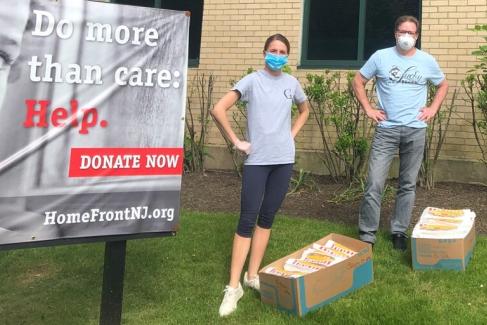

NRG Energy partners with HomeFront, a nonprofit that works to end homelessness in Central New Jersey by harnessing the caring, resources,and expertise of the community.
By Mark Herrmann VP, Fundamentals & Structuring at NRG
At NRG, we are driven to be active members of our communities. Many of us, both individually and collectively, give our support, our time, and our resources to nonprofit organizations dedicated to helping vulnerable members of our community. This need to help has only been heightened as we begin to understand the breadth of COVID-19.
As we realized the impact this public health crisis was having locally, members of the Commercial Operations team felt a growing need to contribute. We knew that so many in our own community — just a few miles from our headquarters in Princeton, NJ — were struggling, whether directly from the illness or from the resulting economic fallout.
While we wanted to help, we also knew the pandemic had put up barriers. Many organizations were not doing the same work or were limiting outside assistance due to COVID-19. With these thoughts top of mind, we asked; “Who needs help? Who can we reach out to? How can we make a real difference?”
One answer was HomeFront, a nonprofit organization whose mission is to end homelessness in Central New Jersey by harnessing the caring, resources, and expertise of the community. HomeFront has many initiatives, including over 30 programs dedicated to alleviating the immediate pains of homelessness, helping individuals and families to become self-sufficient, and empowering the homeless to advocate for themselves.
In response to COVID-19, the nonprofit — like many others — saw a tremendous increase in the level of need and had to reimagine ways to serve those who were relying on their help and aid. The solution HomeFront devised was a new program called “Operation Double Helpings,” centered on two communities vulnerable to the economic effects of COVID-19 — people who are homeless/home insecure, and employees of small local restaurants.
My first phone call with Connie Mercer, Homefront’s founder and CEO, was illuminating. Upon learning how the organization was working to feed and support displaced families in five local motels — given that their own facilities were closed due to COVID-19 restrictions — we knew we needed to get involved.
Along with my wife, my team and I committed to funding 120 meals each week. This included the coordination and ordering of these meals, and delivering them with the hope that we would positively impact those in need and give the initiative a chance to grow.
Our partnership with HomeFront and our efforts to help “Operation Double Helpings” have been successful. Since its start a little over a month ago, the program has grown to include the delivery of over 280 meals per week, plus groceries, and has been critical in supporting and feeding those in need. Community members have stacked hands and worked hard to expand the program’s reach on several fronts, including:
- positiveNRG — 1:1 matching of all NRG employee donations
- HomeFront’s Women’s Initiative members — essential supporters, donators, and volunteers
- Local restaurants like Leonardo’s, Carlucci’s Italian Grill, Vince’s Pizza, Villa Rosa, Continental Tavern, GingerWok, Princeton Soup and Sandwich, and Cedar Gardens — meals provided at cost
- The Lawrenceville Main Street partnership of local businesses and community members — donations provided in support of the program
- Trenton Area Soup Kitchen (TASK) — preparation of 90 meals per week
Being a part of this initiative has been a truly impactful experience for those of us lending a helping hand. In our effort to make a significant impact in others’ lives at this critical time, our community has found a way to face this current situation head-on and, in doing so, has achieved an unexpected result. We have found a way, with the help and expertise of HomeFront, to remain connected to each other, to remain compassionate, and to give even in the face of adversity.
However, “Operation Double Helpings” still has room to grow and a need for more people to help. I invite you to join an initiative that is working together to support our neighbors. Whether you wish to donate or learn more about volunteering, visit HomeFront’s website and learn how you can contribute.
Previously published in the 3BL Media newsroom.
Image credit:
Breaking the Cycle: A Formula for Truth and Reconciliation in America
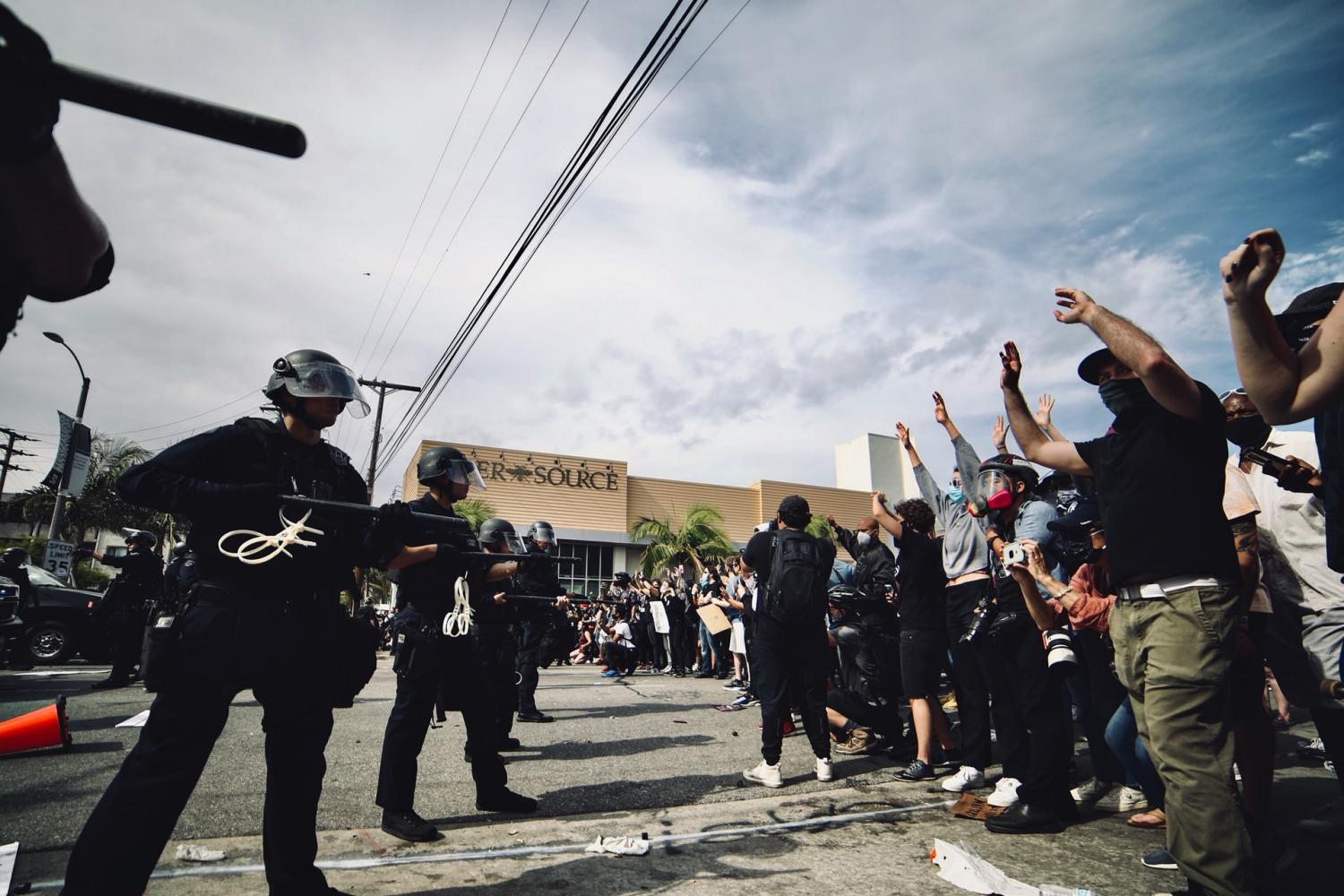
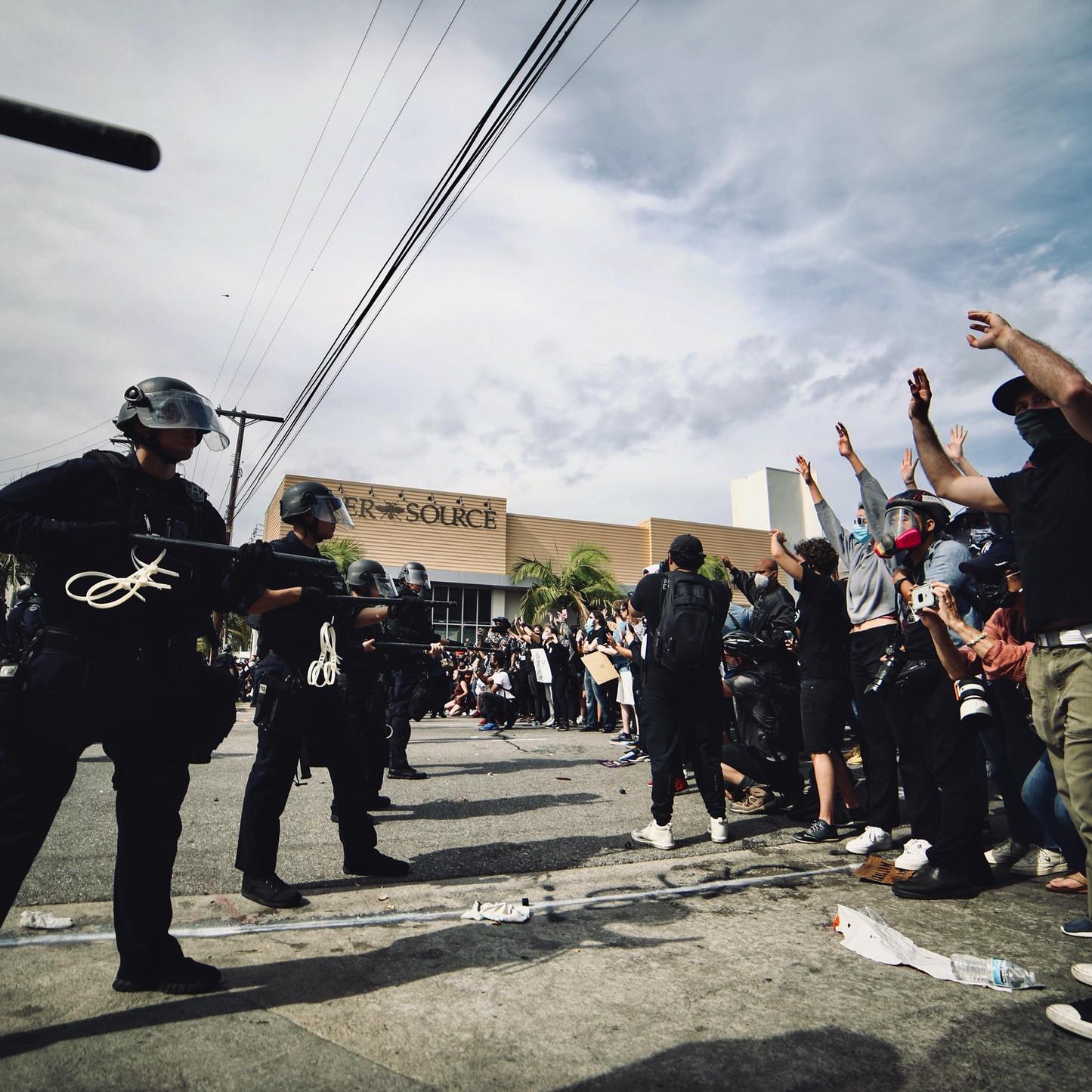
It helped transform South Africa; now, truth and reconciliation in America should be on the table.
On the afternoon of July 16, 1964, a 15-year old African American named James Powell played with his friends in front of their Harlem homes. A neighboring tenement superintendent, using a high-powered hose to wash his building, turned the hose on the youths, reportedly saying, “I will wash the dirt off you [racial epithet]…”
The boys objected. Police were summoned. Off-duty New York Police Lieutenant Thomas Gilligan arrived, drew his service revolver, and discharged it, striking and killing Mr. Powell in front of his friends and neighbors. Protests erupted in Harlem and cities across the country. In spite of the presence of so many eyewitnesses, in September, 1964, Lieutenant Gilligan was cleared of any wrongdoing.
America’s racial divide is nothing new
In the summer of 2020, we stew in the civil unrest unleashed by two shocking murders of African Americans: Mr. George Floyd at the hands of Minneapolis police officers on Memorial Day, and Mr. Rayshard Brooks by the felonious acts of Atlanta policemen eighteen days later.
And so we come to Lie #1: This madness - the persistent scourge of predatory police, and the endemic racial biases underlying - will end here.
This Lie lives alongside many other awkward and haunting untruths – from the belief that new laws will fix things to a nationwide policing problem.
We are, sadly, not better than this. This, cousins, is very much who we, as Americans, are, and have been for centuries.
Let us first resolve as a given that the vast majority of good people serving as sworn police officers, as challenging and dangerous a line of work as can be considered, are heroes and selfless servants of the public. It is the acts of their bigoted unqualified colleagues upon which we must focus. To date, the actions and voices of protestors, speeches by leaders, hundreds of new laws, and the deaths of hundreds of our fellow citizens, have failed to shift our reality.
This failure arises from our studies refusal to authentically name our national condition: we have lived in an apartheid regime from the time of the Republic’s inception.
If you disagree, we would offer the words of the 1976 U.N. International Convention on the Suppression and Punishment of the Crime of Apartheid. Its outlawed acts include any “domination by one racial group of persons and systematically oppressing them.”
We have failed to make progress against these toxic social conditions because we have not correctly diagnosed our cultural illness. We have been treating only the symptoms.
The conditions of apartheid in America are more malevolent, persistent, and easily transmitted than any coronavirus. Recovery from the morbid prejudices that enable, support, and reward racism, classism, and sexism will require nothing short of a transformation of our national culture.
The fight against apartheid offers a template for healing America’s racial division
The good news here is that we know how to heal apartheid regimes and transform national cultures. In South Africa in 1994, a few years after Nelson Mandela was released from twenty-seven years of imprisonment, he was elected president of the nation. This, following 342 years of apartheid since the Dutch colonized the region in 1652.
Following the 1994 elections, civil society organizations in South Africa enacted The Promotion of National Unity and Reconciliation Act. F.W. De Klerk, the last South African President from the ruling white National Party, signed the Act into law.
The Act created a Truth and Reconciliation Commission (TRC), designed to lead the country into the clear light of inclusion and healing. The commission conveyed the urgency of truth telling by all parties about the legacy of three and a half centuries of apartheid; and reconciliation - from a Latin connoting to make good again, or to repair. When true reconciliation occurs, the two formerly hostile sides become respectful of each other—and, ideally, friends.
South Africa sustained the work of the Commission. Its work continues to this day, thanks to the establishment in 2000 of the South African Institute for Justice and Reconciliation (IJR). This body exists to “enable African and global communities to promote reconciliation and to apply human-centered approaches to socio-economic justice.”
The transition contemplated by the Act, the TRC, and the IJR was uneven. Killings and violence punctuated the 1994 presidential campaign, which suffered from fraud and intimidation tactics. The African National Congress (ANC) has been periodically beset by corruption during its years leading the nation.
Nonetheless, the TRC and the IJR succeeded in transforming the national culture of South Africa, three and a half centuries in the making. This is an object lesson for the United States at this singular moment in time, this long, hot summer of 2020.
The path to truth and reconciliation
If we are to craft a cultural transformation, we should first consider what is a national culture. We then must examine the action steps, means, and methods by which the TRC and IJR came about.
We invite you to consider this incisive definition of culture from Wendell Berry’s book, The Unsettling of America: Culture and Agriculture.
“A culture is not a collection of relics or ornaments, but a practical necessity, and its corruption invokes calamity. A healthy culture is a communal order of memory, insight, value, work, conviviality, reverence, aspiration. . . . It clarifies our inescapable bonds to the earth and to each other. It assures that the necessary restraints are observed, that the necessary work is done, and that it is done well.”
With this definition in mind, we can turn to the skills and methods required to make our national culture new and more consistent with the “promise” of America.
The tools are those of statecraft - of classical diplomacy. The highest aim of the diplomat is to create the necessary conditions for peace by convening the needed regenerative conversations. Only by these means can a national culture transform.
More than anything else, the work of the diplomat is grounded in a simple, perhaps naive, fundamental verity: Love. This form of love is capably portrayed by a pair of Chilean philosopher scientists:
“Love is the only emotion that expands intelligence, creativity and vision; it is the emotion that enables autonomy and responsibility. Only in love can we be creative, fully human, and able to seek and perhaps find a common shared future.
Only in [this way] can people be relaxed and find the conditions conducive to engage in higher intelligent behaviors . . . . Learning, collaboration and creativity happen when we are able to function from a consciousness capable of including a world-centric awareness of ‘all of us.’”
The skilled diplomat convenes the disputants in reaching this elevated place of awareness, a place of ubuntu. Employing this method, the diplomat can help to realize the highest end point of the trade of statecraft: Peace & Reconciliation.
The case for a seeking truth and reconciliation in America
We must make this work of reconciliation our daily bread. We must establish an American Truth and Reconciliation Commission, and implement thereafter an enduring American Institute for Justice and Reconciliation. In this way, we can turn the tide and succeed in extirpating endemic racism and predatory policing at their roots. These new institutions will play an essential role in this transition, especially if it is overseen by one more piece of civil society infrastructure, a new federal Department of Culture and Heritage.
Filled with hope, forged in conviction that this diplomatic model holds the promise to rebirth our national culture, and invoking the inspiring spirit of ubuntu, this work we simply must do. To do anything less is to abandon, forsake, and betray hope, love, courage, and honor.
This article was co-written with Mackinzee Macho, an intern with the Regenerative Design Program at The Foresight Lab.
Image credit: Joseph Ngabo/Unsplash
Turbine 1,500: Ørsted Reaches Offshore Wind Milestone
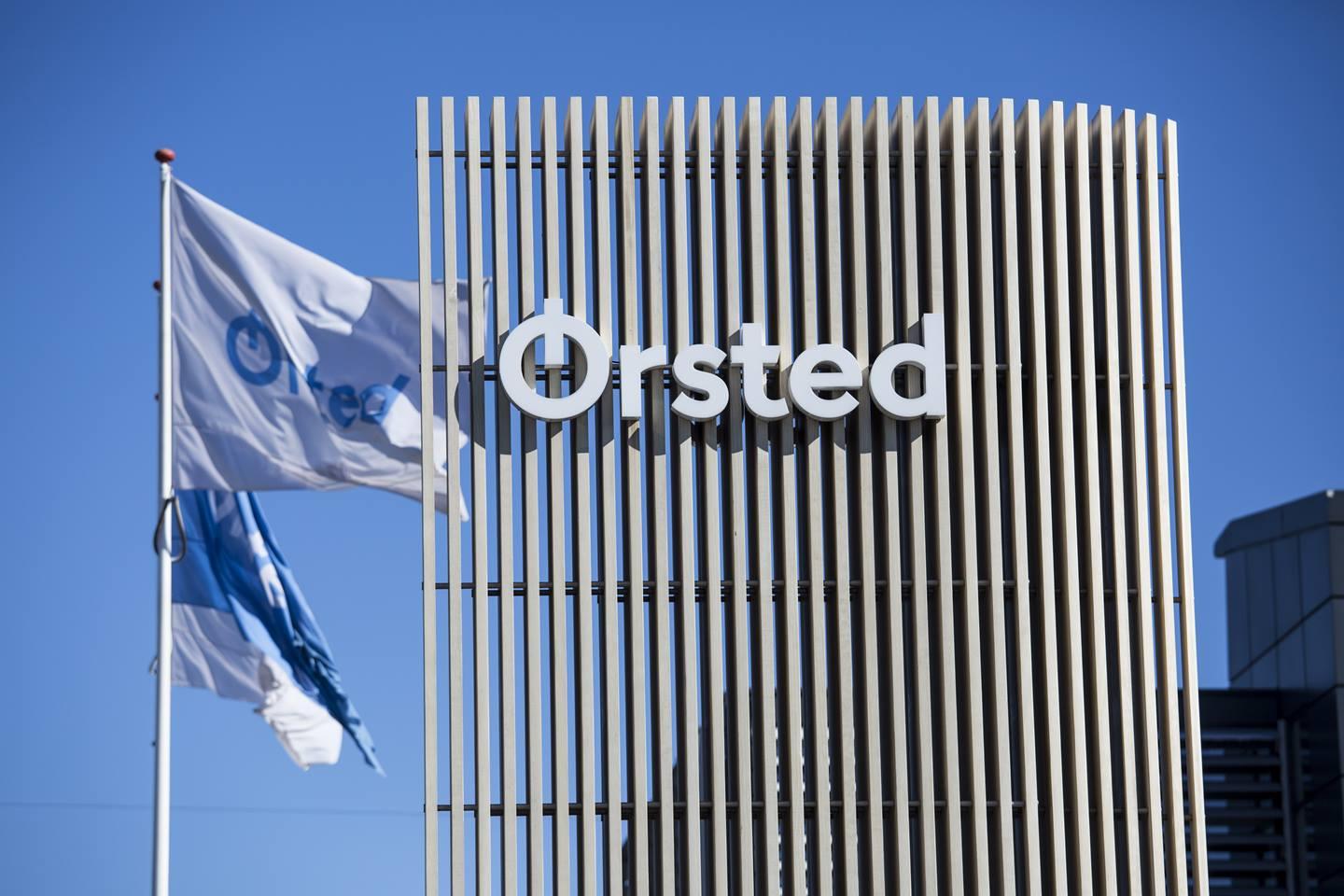

When Ørsted recently installed the 25th of Borssele 1 & 2's 8MW wind turbines, in the North Sea off the Netherlands, it was also the 1,500th offshore wind turbine installed by Ørsted.
Ørsted is the first offshore wind developer to reach this significant milestone. Before construction start at Borssele 1 & 2, Ørsted had already installed 6.8GW offshore wind capacity globally, which annually supplies green electricity for the equivalent of 6.6 million households. Ørsted is currently constructing 3GW of offshore wind and aims to have installed a total of 15GW by 2025 in Denmark, Germany, the Netherlands, Taiwan, UK and the US.
Anders Lindberg, Executive Vice President, Offshore EPC & QHSE, says:
"Offshore wind has matured at a rapid pace and can now be considered a cornerstone in the green transformation many places in the world. The 1,500 offshore wind turbines installed by Ørsted will contribute significantly to a greener future, but there's no doubt that the potential of offshore wind reaches far beyond that. Today, offshore wind power is not only a clean, but also a cost-competitive alternative to power generated by burning of fossil fuels."
In 2019, the International Energy Agency (IEA) estimated that offshore wind power, even if only confined to windy regions within 60km from shore, has the potential to globally generate up to 36,000 terawatt hours of renewable electricity per year. That would outstrip current global electricity demand of 23,000 terawatt hours. The IEA also concluded that offshore wind power could become the largest source of electricity generation in Europe by 2040. According to European Commission scenarios, Europe will need 450GW of offshore wind power to reach zero emissions by 2050. This is roughly 20 times more offshore wind power than has been installed today.
Ørsted installed the world's first offshore wind turbine at Vindeby, Denmark, in 1991. The entire offshore wind farm, consisting of 11 turbines, had a capacity of 5MW - a lot less than the capacity of a single modern offshore wind turbine. In 2012, 21 years after Vindeby, Ørsted installed its 500th turbine, which was achieved at Walney Offshore Wind Farm in the UK. The 1,000th followed only four years later at the German Gode Wind 1 & 2 project.
Previously published by Ørsted and in the 3BL Media newsroom.
Image credit: Ørsted
Mentoring During a Pandemic: Why We Must Rethink Our Leadership

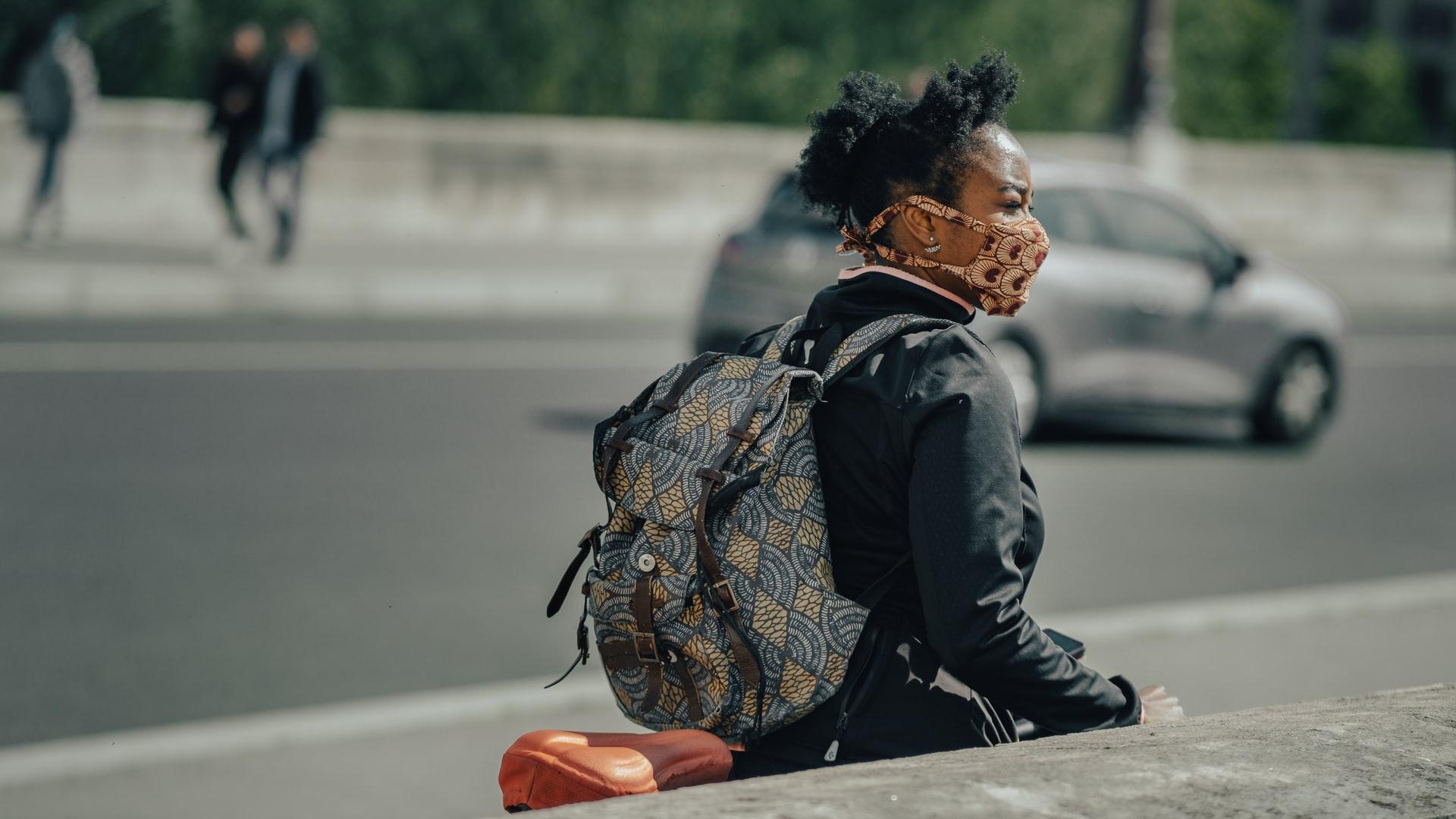
The global pandemic has left business owners and employees feeling more anxious than ever. This is understandable, as many of us have never experienced a hardship quite as significant as this before.
The virus has impacted all of us. Leaders have exhausted themselves carrying the weight of their company's health and their employee's well-being on their shoulders for months now. Employees, on the other hand, have been perpetually concerned about their job security and financial freedom, all while trying to preserve their physical and mental health at the same time.
Sustaining one's leadership abilities while also trying to keep employees happy and engaged is difficult under normal circumstances, let alone during a global crisis.
Forget the lingering fear and uncertainty surrounding the pandemic, COVID-19 has also completely disrupted the workforce. Remote work, which was once only favored by the tech industry and companies with younger personnel, is now the temporary — or permanent, in some cases — solution for all non-essential businesses.
Some employees will thrive working outside a traditional office space, but others won't. In lieu of the usual face time employees get at a traditional office, mentorship has become even more critical during these times. Leaders are now having to re-imagine what management and communication look like in a remote work environment.
More frequent, spontaneous 'face-to-face' time
Face time may seem different when your entire team is working from home, but it's just as (if not more) important to carve out moments for more consistent and reliable communication with your team.
The longer an employee goes without seeing you or fellow employees, the more isolated they become. This is problematic because it cripples their ability to be productive. It's up to you to watch out for these red flags and step into course-correct when necessary, but it's also critical that you take a preventative approach from the onset.
Schedule more frequent touch points with your team on video conferencing platforms like Zoom or Skype. These meetings should be more casual, focusing less on work and more on how employees are feeling. Keep them light, even sprinkling in humor when appropriate. Jokes and laughter will help employees connect and take back control of their lives again. These conversations may feel more personal than usual, but there are powerful benefits to forming casual connections with your team members.
Be authentic
'Authenticity' has gained a reputation as being a business buzzword, but it's a real way to connect with your employees. Your team doesn't want cold, authoritative leadership; they want authenticity, candor, and vulnerability.
Marriott CEO Arne Sorenson recently addressed his staff about the global pandemic in a video that got a lot of outside attention. What caused the video to go viral? Sorenson let down his guard in front of his entire company, and they were grateful for the sensitivity and authenticity he put forward.
Delivering somber updates or bad news is never easy, but you should never sugarcoat these conversations with your team. This doesn't protect employees, it just spreads distrust and feelings of unease across your entire operations. Never hesitate to rip the bandaid off. Employees celebrate honesty and reject deception.
Be intuitive to your employee's needs
The pandemic has uprooted any semblance of normalcy we've had. You're going to see employees respond to this tragedy in different ways.
Keep your finger on the pulse of your employees' well-being. Things aren't business-as-usual, so you can't expect everyone to maintain the same standard of work when everything else has been flipped on its head. Trust your intuition when it comes to leading your employees.
You'll know in your gut when an employee needs to take a day off to recuperate from an overly stressful week. You'll know when a team member will need extra words of encouragement or a small pick-me-up at the end of a difficult work day. If it gets really bad, you should know when extra measures need to be taken, like giving employees extended time off or encouraging them to seek counseling.
But to be intuitive, you must also be empathetic. Leaders who lead with empathy truly know their employees inside and out. This is the kind of attention that becomes all-the-more critical when you can't consistently observe employees in an office setting.
Stay positive during this pandemic
Positivity and hope should come as an extension of transparency. You'll still need to have difficult conversations with your team. You'll still need to hold employees accountable for the job they're doing. Work still needs to get done even in the midst of a pandemic, so you need to strike a balance between keeping the ship afloat and ensuring that those steering the ship are okay. What your employees really need right now is a support system. Be patient with them. Let them know it's okay to feel overwhelmed and encourage them to let their guards down and accept help.
The global pandemic is testing everything we know about leadership, but one thing is true: the leaders that rise to the occasion are the leaders that have employees at the forefront of everything they do. These are the leaders that employees will want to work for post-COVID 19. These are the businesses that will still be around once the dust settles. And these are the employees that will remain loyal to their company even when things are chaotic and uncertain.
Image credit: Thomas de Luze/Unsplash
CPG Giants Rush to Cease Marketing of Skin Whitening Products


Skin whitening products have been around for years: Leave the West and travel around the Pacific Rim, and the chances are high a local drugstore or supermarket has an aisle devoted to these products.
At a minimum, these products help perpetuate and amplify Western ideals of beauty – and at worst, detractors say they can cause health problems. “The need to appear ‘white’ can be destructive, both mentally and physically,” wrote one journalist several years ago.
The reckoning over race relations in the wake of George Floyd’s murder in Minneapolis, which for now are echoing far beyond the U.S., has nudged some of the world’s leading consumer packaged goods (CPG) and personal care companies to roll back the marketing of skin whitening products.
L’Oréal, for example, announced last week that it would remove terms such as “whitening,” “fairness” and “lightening” from its skin care products. The company’s Garnier line, one of many products that have advertised in South Asia that they could lighten one’s skin complexion, has come under scrutiny in recent weeks. One Bollywood actress has come under intense criticism for her endorsement of Garnier products after she tweeted a message in support of the George Floyd protests. Many other celebrities in India have been called out as well for saying they stand with Black Americans yet have cashed in from endorsing skin whitening products.
Also in India, Unilever revealed that it would rebrand its “Fair & Lovely” skin care line, another product that had scored paid endorsements of Bollywood celebrities over the years. The problem, however, was the decision to adopt a more “inclusive” name, “Glow & Lovely,” which detractors say doesn’t change the problem: ongoing discrimination against darker skinned citizens, often referred to as colorism.
"I do think it is a symbolic message and a step in the right direction. However, a lot of us here feel like that's not entirely addressing the social stigma that comes with these creams because essentially you're still selling a fairness cream brand, just packaging it as not Fair & Lovely, but whatever it is they come up with,” Mumba-based documentary filmmaker Richa Sanwal told Public Radio International’s The World. “So essentially we're still selling that same dream, just packaging it differently.”
The outcry against skin whitening products is nothing new. Several years ago, Procter & Gamble financially backed a documentary, Imagine a Future, which among its many messages imparted that all skin tones is beautiful. At least one blogger, however, pointed out that the company manufactures its fair share of skin lightening creams, which in the end undercuts that documentary’s message.
Johnson & Johnson is another personal care company that said it would either rebrand or discontinue its skin whitening products sold in market such as Africa, the Middle East and South Asia.
Like many outcomes related to the ongoing race relations activism sweeping across the world, questions linger whether this ongoing outcry will really change society in the long term. After all, the Nikkei Asian Review notes that according to Future Market Insights, the skin whitening products industry is worth about $13 billion – and more than half of those revenues are generated in Asia. And assuming current outrage over these products subsides, that amount is projected to grow to $24 billion by 2027.
Image credit: Pexels
Bringing it Full Circle: 20+ Years of Connections Through Selling on eBay

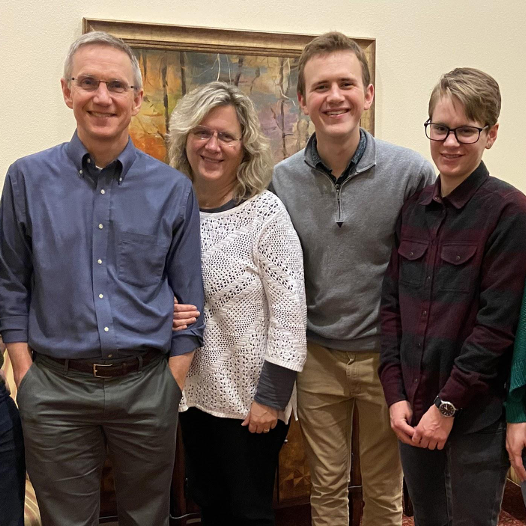
The online marketplace at eBay has been enriched by the hundreds of thousands of independent small businesses and entrepreneurs worldwide.
Cami Nyquist, a mother of four, often jokes that her eBay business is like her fifth child. Over the past two decades, she has poured her heart into growing her small business from her kitchen table in McMinnville, Oregon, to a flourishing online storefront with thousands of rare and unique collectibles for sale every day for charity. Cami’s life philosophy is grounded in purpose and built around community. And, with every sale made on eBay through her Swedemom store, she hopes to pay it forward by providing opportunity — a tiny token of happiness — for someone else.
“I’ve always believed that technology coupled with compassion can really help people. The transformation of human lives is more valuable than money can ever buy,” Cami said. “What eBay has given me is an opportunity to fulfill what I have believed for all of my life and have been taught to do — and that is to help serve people.”
In 2016, Cami founded the Swedemom Center of Giving, a nonprofit that provides specialized financial assistance to a network of other nonprofits by leveraging ecommerce like the eBay for Charity platform. Her center helps fundraise for over a dozen organizations across Arizona, Illinois, Oregon and Texas that support youth and family programs, community building initiatives, homeless shelters and more.
Cami’s center lists donated quality items on eBay for Charity, where all sale proceeds go directly to the nonprofits to help them sustain and thrive. So far this year, Cami’s center has sold more than 6,600 items on eBay. And call it kismet: Her center’s office is in the former campus of a community college where Cami used to teach classes on how to sell on eBay years ago.
“Here I am sitting in a building, where I taught this class to teach people how to put stuff on eBay. And, still at this moment, we are sitting here teaching people how to put stuff on eBay, but in their own little skillset,” Cami said. “Right now, there's people in the training room learning to do imaging, description, intake, warehouse, shipping and fulfillment.”
Cami’s center helps create more ways for donors to give, while providing support to other nonprofits, job training, internships, community volunteers and sustaining products to help keep items flowing in a circular economy online. “What I feel this organization that I’ve founded will continue to try to strive for is building community. Building something meaningful, purposeful and sustainable,” Cami said.
Family always has been an inspiration for Cami and her business. Her eldest son, then eight years old, helped her set up her first handful of eBay listings. The first item she put up for sale was a thimble, once owned by her grandmother that had served as a reminder for Cami to appreciate the little things. Now, her youngest son continues to support the business by ensuring the technology side of the house is running and humming along smoothly.
Running her own business has been a full-circle moment for Cami, whose father also had been a business owner and is now retired. As a young girl, Cami recalls watching him spend long hours running his business and how her mom never stopped believing in him, supporting him every step of the way in building his company.
Now, her own kids have spent their childhood and teenage years watching Cami grow her business, with hard work, perseverance and fortitude (or “gumption” as Cami likes to put it) with her husband giving her additional “courage and strength” every day, she said.
“They have hung out with their mom all these years in shipping – and they all did packing at one point or another. They even drove across the country to pick up inventory at times in the early days of our business,” Cami said. “They’ve really experienced the business and have all grown from it. It’s been fun to watch them watch us, and see their desire to be world changers as well.”
Through her center, Cami said she’s had countless memorable experiences in connecting a buyer with the item they have long sought. Two customer stories, though, have stood out over the years for Cami. Once, she received a letter from a woman who ordered a purple hat for her mother. The customer said her mother had lost the ability to communicate and hadn’t spoken in years. “When the package arrived, the lady said her mother was smiling as she opened the packing, and when she put the hat on, her mother started to sing after not uttering a word in years!” Cami said.
Another story that has remained with Cami was a leather coat she sold to a customer in Wisconsin. The customer wrote saying the coat was one her father had made in his factory, and every Christmas, he’d bring them home for the family to wear. Since his passing, the daughter said she had been searching for one of his coats for her husband.
“And she sent me a picture of this coat and of her dad making the coat. I thought, ‘Oh wow.’ She said she couldn't give words to what it meant to her to get that coat to her husband that her dad had made,” Cami said.
“I can't tell you how many times a product has connected with somebody's memory of something and how important that was to them,” Cami said. “That's what gives me life to continue seeing people's lives be happier, because we brought something that was meaningful back into their life.”
From growing her online business during the Dot Com era to helping items find renewed life and value today through eBay, Cami said it’s been rewarding to help others since she began selling on the marketplace. “I believe, no matter what happens in our world, ecommerce is a way people are going to operate in the future. It’s only going to grow,” Cami said. “To me, this is a time where this generation can step up to the plate and use their skills in ways that are different than my generation did.
Let's do it better. Let's be kinder to each other, work with our community and work with people. That's what we need to do. We need to be more together in our work and in our ability to serve the world.”
Empowering entrepreneurship and creating economic opportunity for all has been our philosophy at eBay since we were founded 25 years ago. Our marketplace has been enriched by the hundreds of thousands of independent small businesses and entrepreneurs worldwide. We win when they do. Learn more about how we partner with our sellers.
Previously published by eBay and in the 3BL Media newsroom.
Image credit: eBay
Pandemic is Wake-Up Call for a More Resilient Global Food System


The novel coronavirus pandemic has laid bare the weaknesses in our global food system, a wake-up call to the food and agriculture industry and to governments grappling with growing hunger. The number of people facing acute food insecurity is estimated to double to 265 million in 2020, as a result of the economic impact of COVID-19, according to the United Nations World Food Program.
“Food systems have shown to be universally at risk of COVID and measures to contain the virus,” says David Nabarro, co-director of the Imperial College Institute of Global Health Innovation at the Imperial College London and COVID-19 Special Envoy to the World Health Organization. “They are not fit for purpose. They don’t serve the farmers adequately. They don’t respond to the needs of poor people who are hungry and at risk of malnutrition, particularly women and children. And they are also far too long and too easily disrupted.”
The quest for a more sustainable global food system
Nabarro’s remarks were part of a recent webinar, "Build Back Better: Ensuring Global Food Security and Accelerating a Resilient Recovery in the Face of COVID-19,” hosted by the World Resources Institute (WRI) and The Food and Land Use Coalition, a community of organizations and individuals committed to transform the global food system. WRI convened the experts to provide insights about how to shift to a more sustainable and equitable model after COVID-19.
In April, the Coalition published a Call to Action for World Leaders, signed by 60 heads of state, to prevent a world food security crisis. Its three recommendations were to keep the supply of food flowing across the world and to maintain open trade; scale support to the most vulnerable and ensure access to nutritious, affordable food for all; and invest in sustainable, resilient food systems.
Nabarro, who has been warning countries to take the virus seriously, said that while the pandemic has revealed serious vulnerabilities related to food systems and nutritional outcomes, “we have an enormous window of opportunity."
"COVID is showing us some of the challenges that have to be addressed as the world works out how to be resilient in the face of this crisis,” he said.
The food supply chain isn’t working for the current crisis
Part of that resilience will have to come from new forms of innovation and shorter, more agile supply chains. Social entrepreneur Ndidi Okonkwo Nwuneli, managing partner and co-founder of Sahel Consulting, a private equity and investment advisory firm working with agriculture policies and strategies in West Africa, noted at the WRI webinar that she has seen this innovation on the ground in West Africa.
“Companies in the region are embracing technology and innovation like never before. They can reach their consumers directly through online services using their phones, and we are seeing farmers adapt, using their cellphones to get information. Technology is exploding everywhere," Nwuneli said. "We’re seeing shortened value chains, and a lot of entrepreneurs are pivoting. For example, one entrepreneur which made biscuits has switched to making bread, which is seen as something people have to eat on daily basis. And we’re seeing a lot more collaboration and data sharing. Entrepreneurs are committed to survival."
She noted that while 50 percent of entrepreneurs in the food and agriculture industry have either shut down temporarily due to raw material shortages or are struggling to sustain their operations, the other half “have pivoted quite rapidly.”
Such agility will be necessary with the impact of the pandemic expected to increase the number of people at risk of a food insecurity and malnutrition in West Africa from 17 million to 50 million people between June and August 2020, according to the Economic Community of West African States (ECOWAS).
Food insecurity is a huge risk
Already fragile food ecosystems like those in sub-Saharan Africa are paying a steep price for the economic repercussions of the pandemic, but this is a worldwide phenomenon. Claudia Martinez of Colombia, director of E3 Asesorias and a board member of the Green Climate Fund, told attendees that 50 percent of Colombians did not have enough food for a healthy life pre-COVID, and this has worsened during the crisis. Hunger affects 42 million people in Latin America and the Caribbean.
An unexpected silver lining of the crisis is an opportunity to rethink the food system to make it more resilient in the face of future shocks. Public- and private-sector partners across the food and agriculture industry will be expected to have some answers ready for next year’s Food Systems Summit of 2021, convened by the United Nations to articulate and adopt an actionable, integrated plan for a transformation of the global food system. Particularly when it comes to protecting the most vulnerable facing food insecurity, the pressure will be on for real, lasting changes to the status quo.
Asked how he would address the most vulnerable in the food system, Nabarro said: “About nine months ago, I would have said this is about values and our mindset, but inequity creates conditions which lead to the likelihood of contagion and sickness. We’ve seen this with many other contagions but now it is smacking us right in the face that it will not be possible to live in a way that enables societies to continue and economies to recover as long as COVID is enabled to continue to go on because we tolerate massive inequity. The starting point is, we’ve got no choice, but the second point is, we know how to do it.”
Image credit: Emiel Molenaar/Unsplash